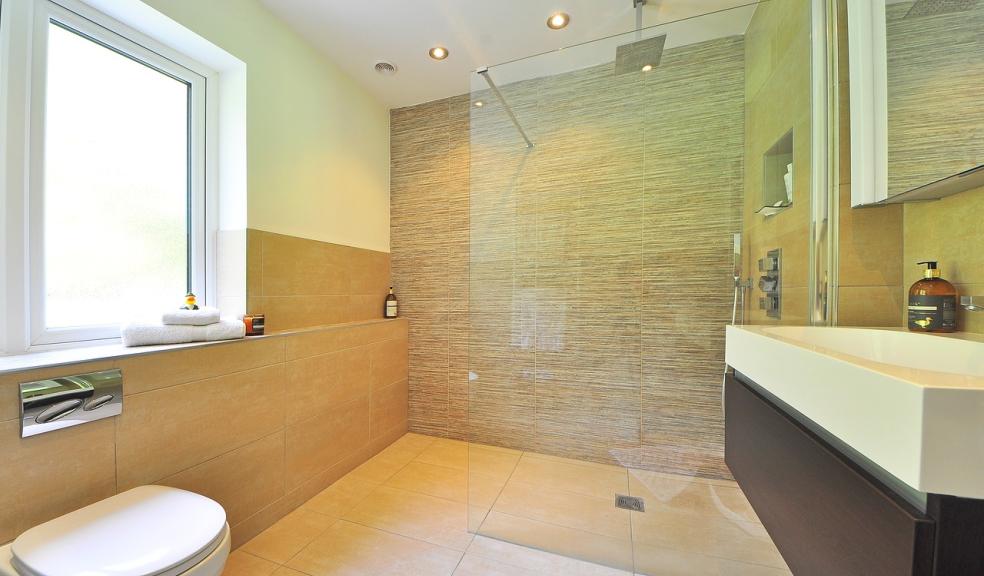
Wet room flooring: All you need to know
The concept of a wet room, with its sleek lines and minimalist design, has taken modern bathrooms by storm. But the heart of a functional and stylish wet room lies beneath your feet, the flooring.
Not just any flooring will do; it must be a harmonious blend of durability to withstand constant moisture and a design that elevates the overall look and feel of the space.
In this article, let's explore the intersection of practicality and style in wet room flooring, guiding you through the best materials that promise longevity without compromising on elegance.
Wet Room Flooring
Before we look at the floor in a wet room, we need to understand the requirements. Wet room flooring needs to meet several key criteria to provide a safe, durable, and aesthetically pleasing foundation, including a shower tray.
Shower Tray Options
While traditional wet rooms often feature a seamless floor that slopes gently towards a central drain, modern innovations and design preferences have introduced a variety of shower tray options that can be effectively incorporated into wet room designs.
To see more wet room shower trays, check out https://wetroomsdesign.co.uk/wet-room-shower-trays.
Tileable Shower Tray: Tileable shower trays come with a built-in slope to ensure proper water drainage towards the drain, eliminating the complex task of creating a gradient in a mortar bed from scratch.
Shower Former Tray: Shower formers come with a pre-formed gradient to direct water flow towards the drain, ensuring efficient drainage and preventing water from pooling in the shower area. Designed to be installed at floor level, shower former trays offer a seamless transition between the shower area and the rest of the bathroom, enhancing accessibility and creating a modern, open look.
Flush-Fitting Shower Trays: These trays are designed to sit level with the surrounding floor, providing a seamless transition from the wet room floor to the shower area. Made from materials like stone resin or acrylic capped with stone, flush-fitting trays are durable, slip-resistant, and available in a range of sizes and finishes to complement any design.
Custom Shower Trays: For those seeking a tailored solution, custom shower trays can be fabricated to fit specific dimensions and shapes, accommodating unique wet room layouts or design features. These trays can be made from a variety of materials, including solid surface composites, which offer the flexibility of custom fabrication.
Considerations for Shower Trays in Wet Rooms:
- Waterproofing: Regardless of the type of shower tray or tiled area chosen, waterproofing is paramount. The installation must include a waterproof membrane beneath the tray or tiles to prevent water leakage and protect the structure of the building.
- Drainage: Effective drainage is essential to prevent water from pooling in the shower area or spilling into other parts of the wet room. The choice between a central drain, linear drain, or custom drain solution should be based on the shower tray's design and the overall layout of the wet room.
- Accessibility: For those requiring barrier-free access, flush-fitting trays or a completely level-tiled floor without any tray are ideal, eliminating any trip hazards and facilitating easy entry and exit from the shower area.
Top Flooring Materials for Wet Rooms
When it comes to selecting the right flooring for a wet room, the material chosen plays a pivotal role in both the functionality and aesthetic appeal of the space. The ideal wet room flooring must be waterproof, slip-resistant, durable, and compatible with the overall design theme.
Porcelain and Ceramic Tiles
- Durability: Both porcelain and ceramic tiles are known for their long-lasting durability and resistance to moisture, making them ideal for wet room environments.
- Variety: Available in an extensive range of colors, patterns, and sizes, these tiles can be used to create custom designs that fit any decor style.
- Maintenance: Easy to clean and resistant to stains, ceramic and porcelain tiles offer a low-maintenance flooring option for busy wet rooms.
Natural Stone Tiles
- Aesthetic Appeal: Natural stone tiles, such as slate, marble, and limestone, bring a touch of elegance and natural beauty to any wet room.
- Unique Characteristics: Each stone tile is unique, providing a distinctive look that can't be replicated with man-made materials.
- Considerations: Natural stone requires sealing to enhance its waterproof properties and may need periodic resealing to maintain its resistance to water and stains.
Vinyl Flooring
- Water Resistance: High-quality vinyl flooring is completely waterproof, making it a practical choice for wet rooms.
- Comfort: Softer and warmer underfoot than tile or stone, vinyl can make a wet room feel more comfortable.
- Design Flexibility: Modern vinyl flooring comes in a range of designs, including options that mimic the look of wood, stone, and tiles, providing versatility in decor.
Microcement
- Seamless Finish: Microcement offers a continuous, seamless surface that can be applied to floors and walls, creating a sleek, modern look.
- Customizable: Available in various colors and finishes, microcement can be tailored to match any design aesthetic.
- Durability: When properly sealed, microcement is waterproof and hard-wearing, suitable for the demanding conditions of a wet room.
Rubber Flooring
- Safety: Rubber flooring is naturally slip-resistant, even when wet, making it a safe choice for wet rooms.
- Hygiene: This material is easy to clean and resistant to mold and mildew, contributing to a hygienic wet room environment.
- Design Options: Rubber flooring comes in tiles or sheets and is available in a variety of colors and textures, allowing for creative design solutions.
Pebble Tiles
- Spa-Like Feel: Pebble tiles can create a natural, spa-like ambiance in a wet room, adding texture and organic beauty to the floor.
- Massage Effect: The pebbles can provide a gentle massage effect underfoot, enhancing the showering experience.
- Installation Considerations: Pebble tiles require careful installation and sealing to ensure a flat, comfortable surface and effective waterproofing.
Waterproof Flooring
At the heart of wet room flooring requirements is waterproofing. Wet rooms are designed with open shower areas, meaning the entire floor surface can be exposed to water. Therefore, the chosen flooring material must be impermeable to water to prevent leaks and structural damage.
This necessitates not only selecting waterproof materials but also ensuring a professional installation that includes proper sealing and tanking of the entire floor area, extending to the walls to a certain height.
Installation and Maintenance Tips
Professional installation is paramount when it comes to waterproofing in wet rooms, as it ensures the integrity and longevity of the entire space. Wet rooms are inherently more susceptible to water exposure and potential leakage than traditional bathrooms due to their open shower designs and extensive use of water.
Proper waterproofing involves not just the surface materials, but also the underlying layers, making it a complex task that requires expertise and precision.
A professional installer will ensure that all aspects of the wet room, from the floor gradient to the wall membranes, are correctly implemented to prevent water from seeping into the structure of the building.
This includes the correct application of waterproof membranes, sealing of joints, and installation of the drainage system to efficiently channel water away. Any oversight in these areas can lead to costly damage over time, such as mold growth, tile lifting, and structural deterioration.
Moreover, professionals are knowledgeable about the latest products, techniques, and regulations, ensuring that the wet room meets all necessary standards for safety and durability.
Their expertise also guarantees that the aesthetic aspects of the wet room design are executed to a high standard, ensuring that the finished space not only functions well but also looks great.
Wet Room Kits
Wet room kits have become increasingly popular for both DIY enthusiasts and professional installers looking to simplify the process of creating a functional and waterproof wet room.
These kits provide a comprehensive solution, bundling together all the essential components required to construct the wet area, ensuring compatibility and reducing the risk of water leakage.
Components of a Wet Room Kit
- Shower Tray Former: A pre-sloped base that ensures water flows efficiently towards the drain. Some formers can be trimmed to fit specific room sizes or shapes.
- Waterproofing Membrane: A crucial element that prevents water from penetrating the subfloor and walls, protecting the structure from moisture damage.
- Drainage System: Includes the drain base and grate. Wet room kits typically offer different drain designs to suit various floor finishes and aesthetic preferences.
- Installation Materials: May include adhesives, sealants, and tapes specifically designed for waterproofing applications, ensuring a secure and leak-proof installation.
Benefits of Using Wet Room Kits
- Simplified Installation: By providing all the necessary components in one package, wet room kits take the guesswork out of material selection and compatibility, streamlining the installation process.
- Guaranteed Waterproofing: Manufacturers design these kits to offer a reliable waterproofing solution, significantly reducing the risk of leaks when installed correctly.
- Customization: Many kits come with options for different sizes, shapes, and drain styles, allowing for customization to fit various bathroom layouts and design preferences.
- Cost-Effectiveness: Purchasing a kit can be more cost-effective than sourcing individual components separately. It also minimizes the risk of purchasing incorrect or unnecessary materials.
Maintaining Wet Room Flooring
Maintaining the flooring in a wet room is essential to preserve its longevity, appearance, and safety. Different types of flooring materials require specific care strategies.
Here are maintenance tips for various wet room flooring options:
Porcelain and Ceramic Tiles
- Regular Cleaning: Sweep or vacuum regularly to remove dirt and dust. Mop with a mild detergent and water solution to keep tiles clean and glossy.
- Grout Care: Keep the grout lines clean and sealed to prevent mold and mildew growth. Use a grout cleaner and a small brush for deep cleaning and reseal grout lines as needed to maintain waterproofing.
Natural Stone Tiles
- Sealing: Natural stone is porous and should be sealed upon installation and then periodically to protect against water and stains. Consult the manufacturer's recommendations for sealing frequency.
- Gentle Cleaning: Use pH-neutral cleaners specifically designed for natural stone to avoid damaging the surface. Avoid acidic or abrasive cleaners that can etch the stone.
Vinyl Flooring
- Prevent Scratches: Place protective pads under furniture legs and avoid dragging heavy objects across the floor to prevent scratches.
- Cleaning: Sweep or vacuum to remove debris, and mop with a mild cleaner. Avoid using abrasive scrubbers or harsh chemicals that can damage the vinyl's surface.
Microcement
- Sealant Application: Ensure microcement flooring is properly sealed to protect against water and stains. Reapply sealant as recommended by the installation professional.
- Soft Cleaning Tools: Use a soft mop or cloth for cleaning to avoid scratching the surface. Mild, pH-neutral detergents are best for microcement floors.
Rubber Flooring
- Mild Detergents: Clean rubber flooring with mild detergents and warm water. Harsh chemicals can degrade the rubber over time.
- Immediate Spill Cleanup: Wipe up spills promptly to prevent slips and staining.
Pebble Tiles
- Deep Cleaning: Use a soft-bristled brush and mild detergent to clean between the pebbles, where dirt and soap scum can accumulate.
- Re-Sealing: Periodically re-seal pebble tiles to maintain water resistance and ease of cleaning.
Each of these flooring materials offers its own set of advantages for wet room applications, from the classic elegance of natural stone to the contemporary sleekness of microcement or the practical durability of vinyl.
When selecting flooring for a wet room, consider factors such as the overall design theme, maintenance requirements, and personal preferences to choose the best material that meets both your aesthetic and functional needs.









